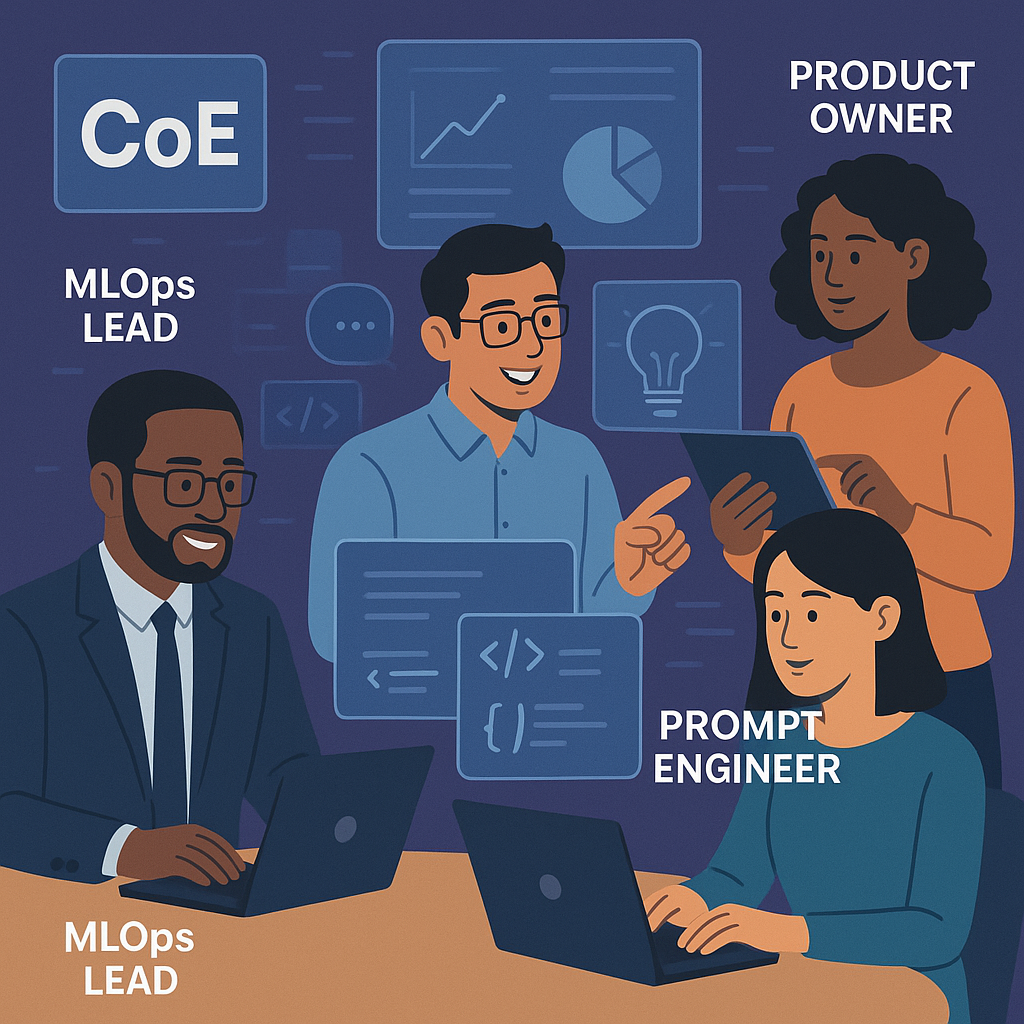Across consulting, legal, and engineering firms today, a common refrain echoes through CIO corridors: AI success stories are multiplying, but so are duplicated costs, inconsistent approaches, and fragmented governance. Building significant, scalable value from artificial intelligence in professional services demands something more than scattered pilots and isolated innovation. It requires focus, discipline, and shared resources—a strategic transition only possible by establishing an AI Center of Excellence.
Why an AI CoE Matters Now
Most large-scale professional-services organizations have felt the growing pain of siloed AI efforts. Separate practice groups may spin up their own data science teams, chase after different technology platforms, and develop models in isolation. While this surge in experimentation can breed innovation, it often leads to costly redundancy. Duplicated data pipelines, repetitive code, and inconsistent performance monitoring all drive up operational expenses with little strategic gain. The inefficiency quickly becomes untenable at enterprise scale.
Moreover, without centralized governance, model quality becomes unpredictable. Sensitive legal, financial, or client data handled by AI systems can put the firm at risk if compliance standards aren’t consistently enforced. The absence of common frameworks or shared best practices means every group reinvents the wheel—sometimes with dangerous results.
Centralizing AI activities into a dedicated AI Center of Excellence effectively transforms chaos into opportunity. An AI CoE doesn’t just streamline costs; it drives standards, creates a shared catalog of reusable assets, and shortens the path from experiment to solution. By enabling teams to leverage proven components and governance processes, CIOs can accelerate enterprise AI’s time-to-value, amplifying the impact across multiple business units.

Structuring the CoE: People, Process, Technology
Establishing an effective AI center of excellence is less about rigid hierarchy and more about encouraging collaboration. Hybrid hub-and-spoke models are especially suited to professional services CIOs. The central ‘hub’—the CoE—sets standards, maintains the reusable microservices catalog, and governs foundational models. Business units serve as the ‘spokes’, responsible for translating standards into real-world applications and innovation. This structure ensures that best practices are not only mandated but also adaptable to each group’s needs.
A high-impact AI CoE rests on well-defined roles. The product owner governs strategic AI priorities, balancing business needs with technological potential. MLOps leads handle the operationalization pipeline, ensuring models are deployed, monitored, and retrained consistently. Prompt engineers, increasingly critical with the rise of large language models, are charged with developing optimized prompts and fine-tuning system responses. Together, they form a cross-disciplinary core that enables robust enterprise AI scaling without sacrificing agility.
On the technology front, the CoE should curate a catalog of reusable microservices—modular APIs, data connectors, and model endpoints—that can be rapidly plugged into new projects. Standardizing on a set of platforms (cloud-based development, continuous integration pipelines, and centralized data repositories) makes adoption faster and maintenance easier. This not only supports scaling but directly enhances reusability, allowing the entire organization to capitalize on what works and learn from what doesn’t.

Funding & KPI Framework
For most CIOs, securing and managing investment for enterprise AI is a balancing act between CAPEX (upfront technology and talent costs) and OPEX (ongoing support and operational expenses). An AI CoE creates a natural structure for a charge-back model, in which business units fund their consumption of shared assets, ensuring accountability while incentivizing prudent use of resources.
To drive value realization, the CoE should adopt a balanced scorecard approach to performance measurement. Key metrics might include innovation velocity (how many pilot projects move into production), efficiency gains (cost savings and time to deployment), and risk management (regulatory compliance and model accuracy). These indicators help drive transparent discussions about what’s working, what’s stalling, and where additional investment or upskilling is required.

Quarterly value-realization reviews, facilitated by the CoE, bring business units and leadership together to assess progress. This regular cadence anchors AI investments to strategic outcomes, solidifying the CoE’s role not just as a service provider, but as a trusted advisor helping steer the enterprise’s digital transformation journey.
Scaling and Continuous Improvement
As the AI landscape evolves, so too must the CoE’s strategy. Rapid advances in machine learning, generative AI, and automation mean technical debt can quickly accumulate if best practices aren’t continuously updated. The CoE must actively track and manage this debt—refactoring code, consolidating tools, and deprecating obsolete models as needed.
Upskilling talent is equally essential for sustaining a competitive advantage in enterprise AI. The CoE should design and facilitate learning pathways for both technical and non-technical staff, ensuring awareness of the latest technologies as well as responsible AI practices. Embedding these learning loops—through training, workshops, and peer collaboration—keeps the firm ahead of evolving standards.
Finally, partnerships are a powerful lever for continuous innovation. Engaging with leading vendors and academic institutions introduces fresh thinking and access to emerging technologies. Such collaboration can also unlock co-development opportunities, underpinning the organization’s reputation as an AI leader in the professional services sector.
Creating and operationalizing an AI center of excellence is a journey, not a destination. For the forward-thinking professional services CIO, it’s the linchpin that transforms scattered potential into enterprise-scale success—ensuring the organization not only keeps pace with change, but leads it.
If you’d like to discuss how to build an effective AI Center of Excellence tailored for your organization, contact us.
Sign Up For Updates.


